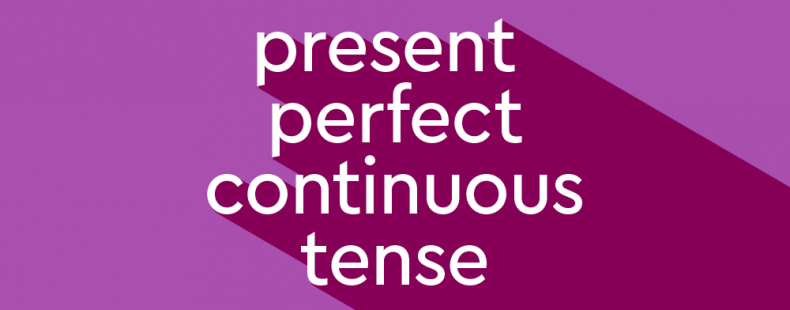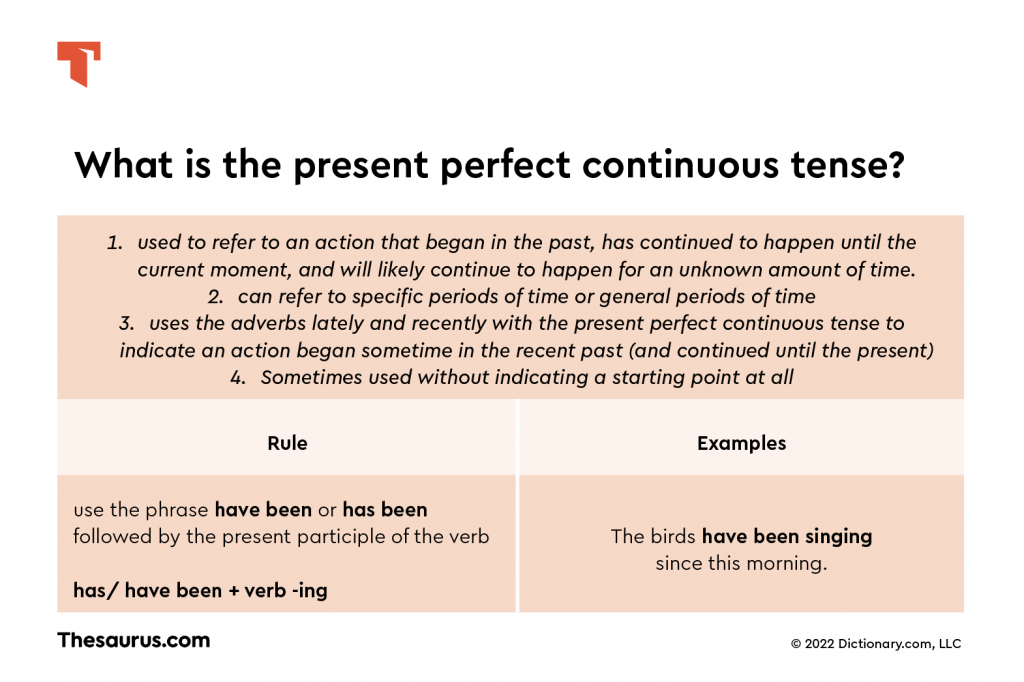For as long as we’ve had language, people have been learning about grammar. If those tricky verbs have been giving you a hard time, then you’ve come to the right place to learn about a cool way that we use verbs to talk about both the past and present. So, please continue reading if troublesome verbs have been driving you mad. It’s time to take a look at a special way to use verbs called the present perfect continuous tense.
What is the present perfect continuous tense?
We use words called verbs to refer to actions and states of being. And in English, we use 12 different types of verb tenses. Generally speaking, the tense of a verb tells you when in time an action or state is happening. In addition to being a mouthful to say, the present perfect continuous tense alerts us that an action began sometime in the past and continues to the current moment. Typically, this verb tense also implies that the action hasn’t stopped at the present and will probably continue for some time yet to come.
If we break down the name of this verb tense, we can get a better idea of how we use it:
- Present: This verb tense refers to an action or state happening right now.
- Perfect: Generally speaking, perfect verb tenses refer to completed actions.
- Continuous: Continuous verb tenses refer to actions that continue over a period of time or are in progress.
Putting it all together, the present perfect continuous tense typically refers to an action that has been completed for a while up until now but will also continue to be done now and into the future. The following sentences contain examples of verbs in the present perfect continuous tense:
- I have been waiting at the bus stop for an hour.
- My aunt has been working as a heart surgeon for decades.
- The birds have been singing since this morning.
When do you use present perfect continuous?
There are several common ways to use the present perfect continuous tense.
1. One of the main reasons that we use the present perfect continuous tense, also called the present perfect progressive tense, is to refer to an action that:
- began sometime in the past;
- has continued to happen until the current moment;
- will likely continue to happen for an unknown amount of time.
2. When we use the present perfect continuous tense, we can refer to specific periods of time or general periods of time:
- Nicole has been rescuing stray dogs since she was a kid.
- I have been going to this store for as long as I can remember.
3. Often, we use the adverbs lately and recently with the present perfect continuous tense to indicate an action began sometime in the recent past (and continued until the present).
- They have been complaining a lot lately.
- Recently, you have been watching TV a lot more than usual.
4. Sometimes, we use the present perfect continuous without indicating a starting point at all. In this case, we can assume the action began in the recent past. For example:
- Now that you mention it, it has been raining a lot more often.
As is the case with the other continuous verb tenses, we typically do not use stative verbs in the present perfect continuous tense. Stative verbs (such as like, want, or believe) refer to states of being, so it usually does not make sense to use a stative verb to refer to something that is in progress. Instead, we typically use stative verbs in the present perfect tense.
For example, we generally don’t say Since I first went to a circus, I have been hating clowns. Instead, we’d say Since I first went to a circus, I have hated clowns.
Perfect your grasp on the present perfect tense by looking into it here.
How to form present perfect continuous tense
In order to form the present perfect continuous tense, we use the phrase have been or has been followed by the present participle of the verb. The present participle is a form of a verb that ends in -ing. For example, the present participle of eat is eating. The phrase has been is used with a subject that is in the third person singular, otherwise we use the phrase have been:
- I have been trying to learn French for years.
- She has been helping me train my dog to fetch.
- The dance team has been practicing for months.
We can also use contractions to shorten our sentences:
- We have been playing video games all morning.
- We’ve been playing video games all morning.
- He has been pestering me for weeks to clean the garage.
- He’s been pestering me for weeks to clean the garage.
How to make present perfect continuous tense negative
To make the present perfect continuous tense negative, we put the word not between the words have/has and been. The contractions haven’t and hasn’t can also be used:
- You have not been smiling as much lately.
- We haven’t been selling many umbrellas since the drought started.
- My kitten has not been eating much the past couple days.
- As far as I know, Henry hasn’t been cheating on math tests since he got caught.
Perfect grammar has never been easier
You won’t mistake your verb tenses again when you check your writing on Thesaurus.com’s Grammar Coach™. This writing tool uses machine learning technology uniquely designed to catch grammar and spelling errors. Its Synonym Swap will find the best nouns, adjectives, and more to help say what you really mean, guiding you toward clearer, stronger, writing.
Whether you’re writing about the past, present, or future, start writing smarter today!
















